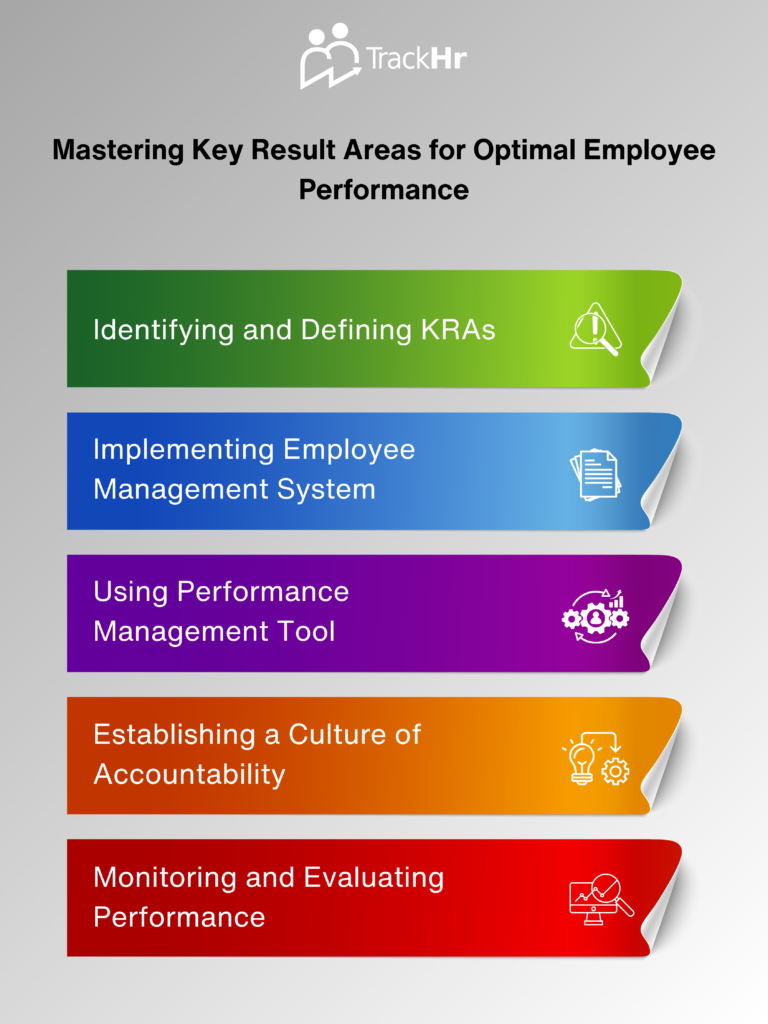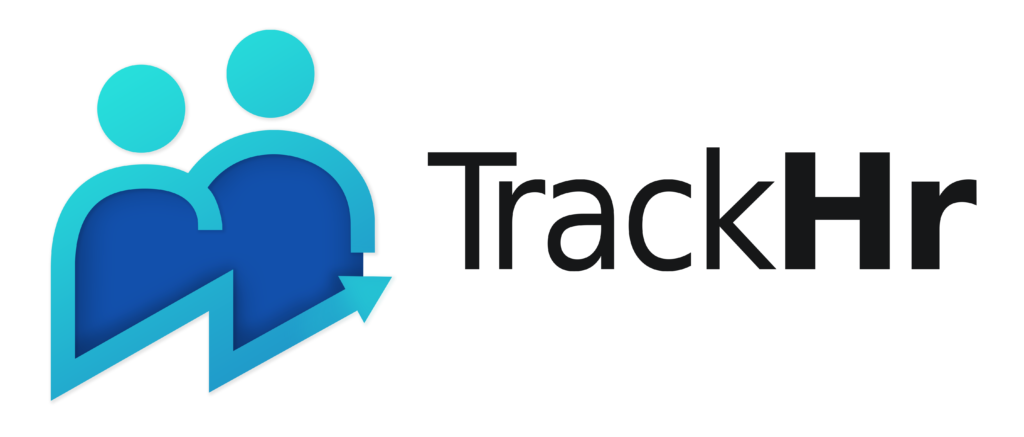Monday,10 July 2023
Mastering Key Result Areas for Optimal Employee Performance
Table of contents
- Introduction • Identifying and Defining KRAs • Implementing Employee Management System • Using Performance Management Tool • Establishing a Culture of Accountability • Monitoring and Evaluating Performance • Conclusion Writing about Final thoughts on optimising employee performance
Introduction
When it comes to achieving optimal employee performance, Key Result Areas (KRAs) are essential. KRAs are specific objectives that measure an individual’s progress towards their role and the company’s overall goals. The importance of having KRAs lies in their ability to provide employees with clear, focused targets that drive their performance. With the help of an Employee Management System and Performance Management Tool, KRAs can be defined, aligned, and executed to improve employee productivity and engagement. Let’s dive deeper into how these tools can help achieve your organisation’s objectives.
Identifying and Defining KRAs

Implementing Employee Management System
Employee Management System (EMS) is an indispensable part of your performance management process. It automates your HR processes and gives you a holistic view of your employees’ performance. Choosing the right EMS is crucial; you need to assess your company’s needs, budget, and compatibility with other software. Once you’ve selected the software, you need to consider training employees on the software for efficient use. Also, consider data privacy, security, and backup policies. Data breaches are becoming more common, so choose a reputable vendor who offers robust data protection policies. Implementing an EMS can be an uphill task, and you’ll encounter resistance from employees who fear losing control over their work schedules. However, with transparency, explaining the benefits of the new system, and training employees, you can alleviate their fears. A robust EMS can streamline your performance management process, improve compliance, reduce errors, and save you time. Every stakeholder will benefit from this technology- from employees to management. With an EMS in place, managers can easily monitor employee performance, progress, and get real-time feedback, thereby facilitating better decision-making. In summary, a well-implemented EMS is indispensable in optimising employee performance, reducing administrative workload and enhancing compliance. Choose the right software, take into consideration Privacy, Security, and Insurance. Train your employees well, and watch how you seamlessly optimise employee performance.
Using Performance Management Tool
When managing a team of individuals with diverse strengths, weaknesses, and work styles, employers in India often ponder over effective strategies. One notable solution is the implementation of a performance management system, which plays a vital role in aligning employee goals with company objectives and enhancing overall productivity.
Employing a performance management system in India brings forth numerous benefits. Notably, it fosters increased transparency in tracking employee progress, thereby promoting improved communication and collaboration among team members. Moreover, this system simplifies the process of establishing and monitoring individual goals, facilitating performance evaluation and the identification of areas for improvement.
The features inherent in a performance management system encompass real-time tracking of employee progress, data analytics, and customizable options tailored to meet the unique needs of Indian companies. By providing objective metrics, this tool enables the facilitation of constructive feedback, coaching, and recognition, thereby nurturing employee growth and development. Consequently, it enhances employee engagement, motivation, retention rates, and job satisfaction.
Utilising a performance management system in India also aids in establishing a culture of accountability. It creates a system of checks and balances, urging employees to take responsibility for their work. Regular monitoring of employee performance assists in identifying performance gaps and areas for improvement, paving the way for constructive feedback and recognition.
Establishing a Culture of Accountability through Key Performance Indicators
Key Performance Indicators (KPIs) play a vital role in fostering a culture of accountability within an organization. Accountability is essential for successfully achieving KRAs (Key Result Areas) and goals. It involves implementing a system of checks and balances that ensures employees take responsibility for their actions.
To cultivate a culture of accountability, effective communication and feedback channels are crucial. It is important to encourage employees to take ownership and responsibility for their work. They should understand the significance of their contributions in relation to the company’s goals and actively participate in achieving them.
Transparency, trust, and respect are essential elements in promoting accountability. Creating an environment where employees feel comfortable sharing progress, challenges, and successes can enhance accountability within the team.
Encouraging employees to take ownership of their work can have a positive impact on their engagement, motivation, and overall productivity. When employees understand that their individual efforts directly contribute to the success of the organization, they are more likely to be committed and perform at their best.
By establishing a culture of accountability, employees at all levels collaborate and work together to achieve the company’s goals. This promotes a sense of shared responsibility and enhances overall performance.
Monitoring and Evaluating Performance
Regularly tracking and monitoring employee performance is crucial to ensure that they are meeting their KRAs and contributing to the company’s overall success. This involves setting up clear expectations and metrics for each employee, which can be easily tracked and measured through an employee management system and performance management tool. Identifying and addressing performance gaps is another critical aspect of monitoring and evaluating performance. By identifying where an employee is falling short, managers can work with them to develop a plan for improvement and provide additional support and training as needed. This helps to ensure that employees are continuously growing and developing their skills and abilities. Calibrating performance metrics is equally important to make sure that they are both accurate and aligned with company goals. This involves collecting and analysing data on employee performance and making necessary adjustments to the metrics, as well as ensuring that there is consistency in the way performance is evaluated across different roles and teams. Finally, providing constructive feedback and recognition is key to improving employee engagement and motivation. By providing regular feedback on their performance, managers can help employees understand where they stand and what they need to do to improve. Similarly, recognizing and rewarding employees for their achievements helps to reinforce positive behaviour and encourages employees to continue to strive for excellence. While monitoring and evaluating performance may seem like a daunting task, with the right tools and processes in place, it can be a valuable and rewarding experience for both managers and employees alike.
Wrapping it up
Incorporating Key Result Areas (KRAs) into your employee management system and performance management tool can have numerous benefits. It helps to align individual goals with organisational objectives, fosters employee growth and development, and improves engagement and motivation. By identifying performance gaps and providing constructive feedback, you can encourage accountability while addressing issues in a timely and effective manner. With regular tracking and monitoring of employee performance, you can calibrate metrics and recognize outstanding achievements. In conclusion, using KRAs with employee management tools and performance management systems can help optimise employee performance, leading to overall organisational success.
